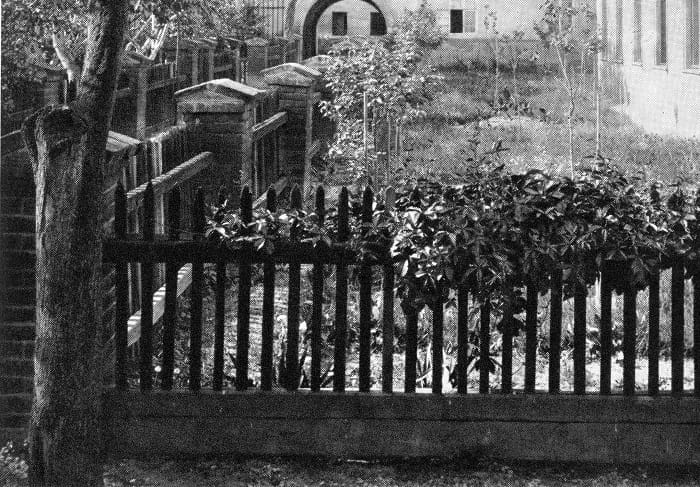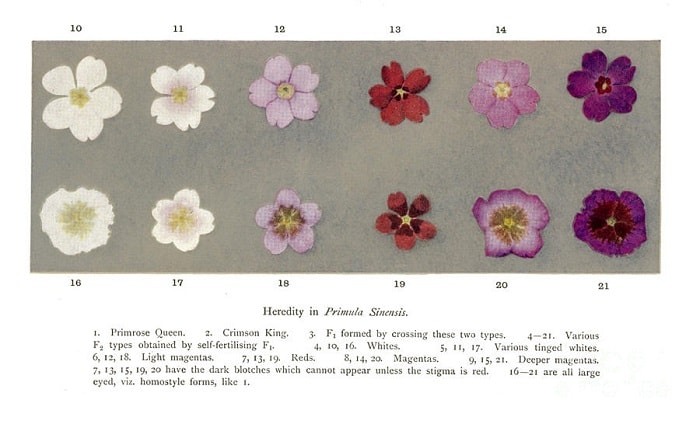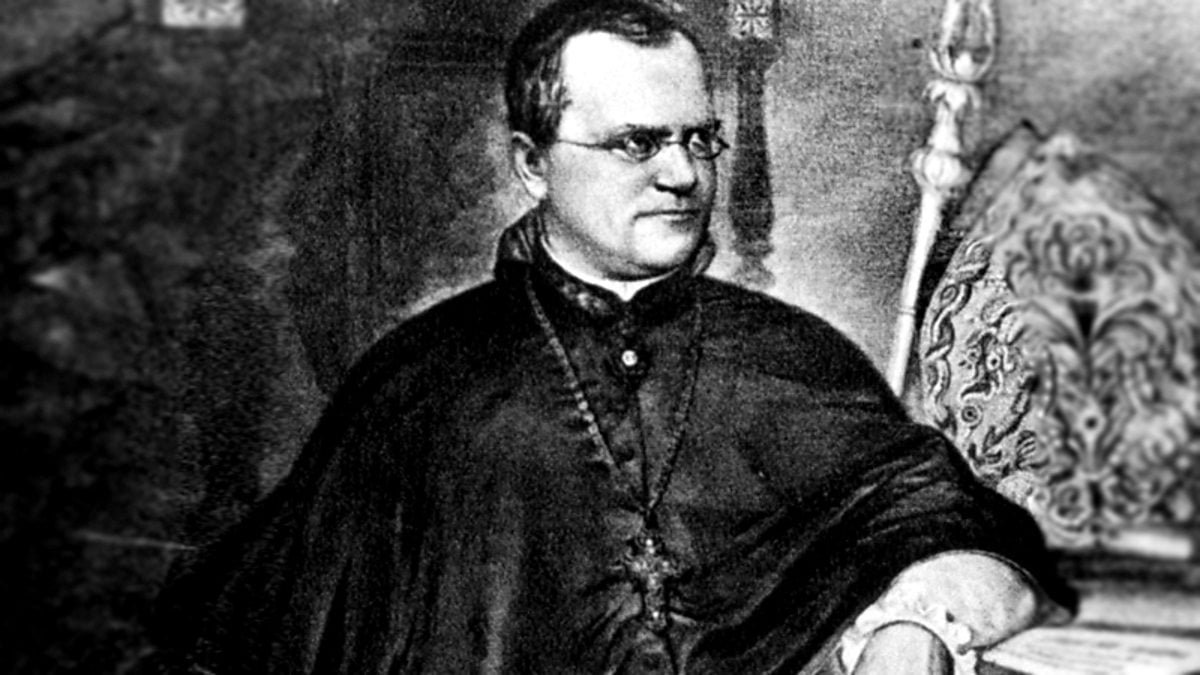In 1856, the monastery built a greenhouse for experimental plant crossings in the walled garden of the monastery of St. Thomas of Augustin near the city of Brünn (today Brno in the Czechia). One of the youngest members of the trainer community, Gregor Mendel, who had just returned from his studies at the University of Vienna, went ahead and used this opportunity to change our scientific understanding of inheritance forever.
Between 1855 and 1863, he discovered the scientific basis of biological heredity by observing the formation and development of hybrids among the variants of the garden pea, Pisum sativum. Over nine years of meticulous experiments with more than 10,000 plants, he developed the theory that peas had properties—what would later be called “genes”—that controlled certain traits in germ cells.
Who is Gregor Mendel?
Gregor Mendel was born in the village of Heizdendorf (now Hyncice) in the northeastern corner of Moravia, where he spent his childhood. He was the only son of a mother, the daughter of a gardener, and a father, a former soldier in the Austrian army. They were peasants trying to make a living on their small farms, but they were also determined that their son would get a good education. Although the school expenses were a real difficulty, they were able to provide the necessary support for their son to study in high school in Troppau (now Opava). After high school, Gregor started to earn money by tutoring.
However, at the age of 18, when he moved to the Institute of Philosophy, a preparatory college for entering a university in Olmütz (now Olomouc), his health deteriorated. He often had to stop tutoring to return home and recover. His sister gave him some of her dowries. Although his studies were interrupted, his academic abilities were noticed at the institute. At the age of 21, he was encouraged to fulfill his academic ambitions and join a religious system that provided the highest level of education. His enthusiasm for science would lead him to a variety of topics, including meteorology, bee culture, and heredity in plants, all of which he worked on with his physics teacher at Oberrealschule in Brünn.
The choice of peas for his experiments was based on the fact that the pea flower was not accidentally crossed due to the structure that tightly covers the reproductive organs. This allowed for manual pollination of each plant, resulting in pure offspring varieties. In the discovery report published in 1866, he began to cultivate 34 variants side-by-side for two years before starting the experiments, explaining that he was sure that all the traits he wanted to examine were constantly observed in the plants.
He used “artificial pollination” for cross-pollination experiments between variants: he removed the male organs from the plant (to prevent self-pollination) and transferred the pollen from another variant. He aimed to “better understand the development of hybridity in new generations” and “obtain new variants.” The previous plant breeders’ cross-pollinating attempts on peas resulted in a sudden, unforeseen increase in variants of second-generation hybrids (known as F2).
Mendel gave a statistical analysis of variants with a mathematical explanation. He demonstrated his scientific originality with his unique statistical approach to variants.
Experiments in the monastery garden

Mendel’s two-year intense schooling at the University of Vienna had prepared him for modern concepts of flowering plant reproduction, “which started with a seed cell and a pollen cell combining into a single cell.” The main aspect of the variant analysis was the rejection of the old concept that the embryo’s genesis was entirely from pollen cells. His examination of the differences between hybrid generations was a significant step forward. He used to be a skilled field botanist who could identify species differences. He used a similar approach to measure variations across hybrid generations, sorting individuals into pairs based on color, size, and shape to determine if they were connected or independently diversified.
Gregor Mendel, observing seven pairs of contrasting pea characteristics, which he studied by separating and reuniting successive generations, concluded that each member of the first generation hybrids (F1) of a pair received only one of the contrasting characteristics of the previous generation (e.g., all F1 plants of green and yellow seed variants are only yellow seeded). He defined this as the dominant character. The observation of dominance was independent of the direction of crossing (yellow female x green male, green female x yellow male).
Gregor Mendel’s explanation of inheritance

He crossed generation F1 to obtain generation F2, and in all cases, he found that one trait in each contrasting pair was more common than the other. Counting a large number of samples, he found that in each pair, the dominant trait was 3:1 more (3 yellow to 1 green) than the recessive trait. Mendel explained this system using the well-known mathematical principle. If the predominant feature is indicated by A and the recessive feature is indicated by a the first generation hybrid will be Aa. When crossed (Aa x Aa) will give AA, 2Aa, and aa compound series in F2. Since A is dominant, the 3:1 ratio in the second hybrid generation is thus clarified.
He attributed the changes to a mathematically predictable process and carried out a series of experiments to answer every question about his theory. By examining the origin and development of hybrids, resulting from crosses of two or three pairs of traits, he found both inheritance (i.e., stability between generations) and variation systems in the relationship of different traits.
By studying the backcrossing, he was able to claim that his theory was well-proven. Because when all seven features were passed on to generations, they were separated independently. By combining the theory of probability and combination with the physicist’s understanding, he witnessed the transition of traits through nine crosses, both individually and in relation to each other. He began his experiments (in his own words) to “create a law,” and by the time he published it, he had already been convinced of its reality.
A theory far ahead of its time

Mendel’s theory, published in 1866, was widely recognized, but no one understood it. He explained that heredity and variation are determined by the way reproductive cells (male and female) meet in fertilization. He explained that a single development process could have different consequences. But no scientist confessed that he shared his enthusiasm. By addressing the individual characteristics of ancestral species in combination, Mendel was able to make predictions about hybrid forms and determine their degree of kinship. He was well aware that the inherited trait does not pass down through generations.
He wrote to the famous Swiss botanist Karl Wilhelm von Nageli that this was evidence of his experiments. He later reiterated this point in a letter he wrote, stating that he used this information to isolate a very large and sweet seed as well as a very efficient pea variant. But neither Nageli nor anyone else until 1900 could appreciate the value of Mendel’s theory.

Two years after Mendel announced his theory to a world that was not yet ready for it, the monastery lost its esteemed abbot, and Mendel was elected as the new one, which brought responsibilities and kept him away from his garden. His hybrid studies ended in 1871. But Mendel recognized the value of his discovery and continued to apply his principles for practical benefit. We know this from the report of a young plant producer who came from France to visit him on a summer day in 1878. While the two of them were walking together in the garden, Abbot Mendel showed him labeled fruit trees, orangery plants, and well-grown vegetables. “There were seven green pea beds whose length and fruit was reshaped to provide more benefit to the institution.” When asked how he did it, Gregor Mendel replied: “It’s just a little trick.”
Studies since the rediscovery of Mendel’s work in 1900 have revealed the essence of this small trick and its predictive qualities. Genetic history is materially and theoretically determined by the subsequent redefinition of the concept of an inherited trait (gene). The basic principles of Mendel’s discovery are now accepted all over the world. The success of this great and humble man, serving both his monastery and his curiosity, has created what we call “genetic” today.

